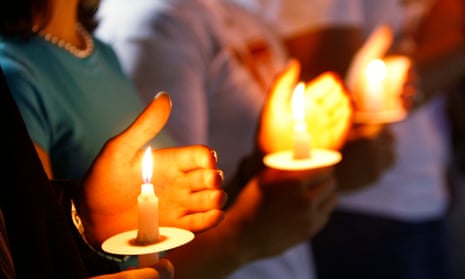Tragedies can strike campuses without warning. In a single moment, the “it-can’t-happen-here” illusion is shattered. At times like this, social media is an essential tool for emergency communication, but it can also be more than that. When a student dies, Facebook and Twitter can unite a community, yet many higher education institutions shy away from engaging in this way.
In late 2014, I learned that a student had died at my alma mater. I visited the college website and social channels in search of information, but there was nothing. As an alumna, I felt left in the dark and disconnected from a community about which I care deeply. As a communications professional, I found the lack of acknowledgement equally troubling.
I recalled a conference I’d attended earlier that year – specifically a talk by Dave Tyler, the manager of digital and social media at the College at Brockport (the state university of New York), about how he handled social media after the murder of student Alexandra Kogut in 2012.
I got in touch with Tyler and found that he, like me, favours transparency and thinks institutions should show their human face in moments of distress on campus. Not everyone shares this view and I’ve seen numerous examples of institutions missing opportunities to connect with and provide comfort for those affected by a loss. Here’s how I would advise them to approach this sensitive task:
Be transparent
In a time of crisis, the campus community will want information — so give it to them. Without an official announcement, people are left to speculate, and misinformation can circulate on channels the university cannot control. Getting in front of the story prevents what Tyler calls an information vacuum.
“If you’re not having the conversation, other people are having it for you,” Tyler says. “A good community manager will already have a sense of what the audience needs ahead of time. That can help you make better decisions about how you’re going to handle a crisis.”
Of course circumstances sometimes prevent institutions from being forthcoming, in cases of suicide or accidental overdose, for example. Institutions must respect the family’s wishes, which often means silence. If individuals are asking questions on social media, it’s best to get in touch with them privately and explain the family’s position. If a large community is calling for an update, consider crafting an official statement that fits within the constraints — announcing that there is no information available to the public at least allows you to acknowledge the event.
Stay conversational
There are three stages to the process of reporting a student’s death on social media. First, there’s the information dissemination and clarification. Then, a time of coming together. Finally, we return to a kind of normality.
University social media accounts are generally personable and conversational; maintaining this approach is key throughout a time of crisis.
“Keep people informed, and let them know you’re experiencing the same sorts of feelings that they are,” Tyler says. “That’s something press releases tend to gloss over. On social, its best to use an active voice, strip out jargon and try to sound natural. By acknowledging the issue, an institution invites people to mourn.”
Offer support
The climate at Brockport after Kogut’s death was “shocked and scared”, Tyler says. Social media, emails, hotlines and websites were used to distribute safety information, direct students to resources such as counselling, and post information about the memorial service and other events.
Last month two students and one former student at the State University of New York at Geneseo were found dead in a murder-suicide. The university tweeted facts in a timely manner, and its homepage featured a banner image of a flickering candle that directed community members to more information.
There was an outpouring of support on Twitter. On Facebook, the university’s page hosted messages of support and heartfelt tributes to the students, which received upwards of a thousand likes, shares and comments. The community wanted to mourn together, and the institution opened its arms.
When a university suffers a loss, morale can plummet. But when a campus community witnesses an outpouring of support, and when compassion is shown across social media — especially from official accounts and those of important campus figures — that gloom can slowly begin to lift.
Communicators too often overlook the fact that social platforms were made for conversation. When your community wants to talk the most, it is not the time to fall silent.
Join the higher education network for more comment, analysis and job opportunities, direct to your inbox. Follow us on Twitter @gdnhighered. And if you have an idea for a story, please read our guidelines and email your pitch to us at highereducationnetwork@theguardian.com

Comments (…)
Sign in or create your Guardian account to join the discussion